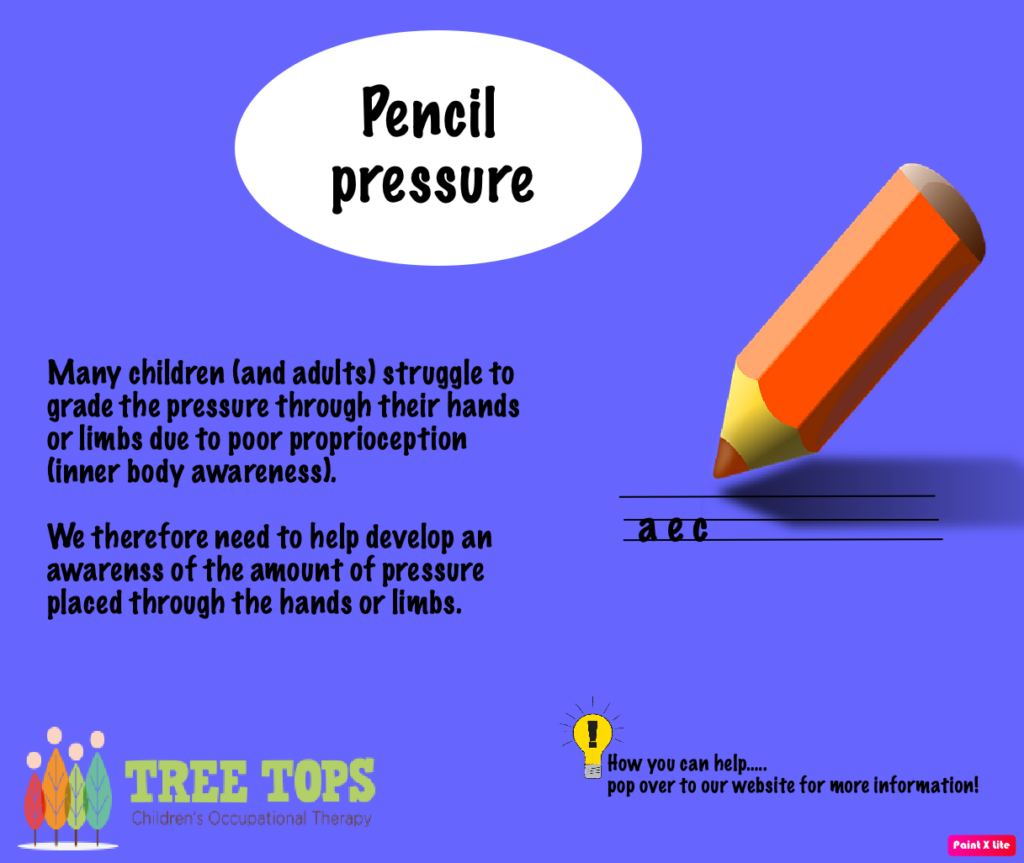It’s all about pencil pressure
Pencil pressure can play a huge part in legibility. Some can press too hard when writing or some not enough pressure. You may see a child pressing too hard that the paper can tear or the pencil snap! Or, on the other hand, pressure may be so light that you cannot read the letters!
The proprioception system receives input from our muscles and joints with regards to body position, pressure, weight, movement and even stretching. Our bodies should be able to grade and coordinate many different movements on stretching, contracting and moving. It also allows us to apply heavy or light pressure in an activity/task. For example, we know moving a chair or desk would require work whereas if we picked up a duster, it would require very little effort.

It’s all about pencil pressure – how you can help!
Heavy pressure:
- Use a hard leaded pencil (HB) so writing is not easily smudged and then not legible
- Putting pressure through the upper limbs by using activities such as press-ups (wall and floor), wheelbarrow and crab walks, crawling games
- Sometimes a light-up pen can challenge your child when writing to stop the pen from lighting up making it a bit more of a game to lessen anxiety
Light pressure:
- Wrist bands – provides additional sensory feedback to the wrist area which will then increase the child/adult’s awareness of their wrist, hand, and arm position
- Writing slope – angle should be approximately 25 degrees to ensure that wrists are positioned on the writing surface
- Try crayon activities to help increase pressure (leaf, brass rubbings)
- Use a softer leaded pencil (2B) so writing becomes heavier
- Sometimes lowering a table slightly so the hips are flexed more than 90 degrees enables the child to obtain body weight to give more pressure through the pencil
